Tongue Tie (Ankyloglossia)
Tongue tie or Ankyloglossia is a health problem which makes it difficult breastfeeding especially in infants and sometimes unrecognized.
Tongue Tie (Ankyloglossia) Definition
 |
| Tongue Tie (Ankyloglossia) Definition |
Lingual frenulum is a structure that normally located between the normally floor of the mouth with the tongue. If it become short and thick as congenital oral anomaly it is called as Tongue tie or Ankyloglossia.
This structure can be varying degrees of shortness and thickness. It may range in thin short mucosal membrane to thick fibrotic band. Ankyloglossia can affect the feeding, speech and oral hygiene.
Etiology of tongue tie not clear whether or not tongue-tie is inherited. Genetic transmission is the most defended cause. In some families may be seen in more than one person.
Symptoms of Tongue Tie (Ankyloglossia Related Health Problems)
 |
| Symptoms of Tongue Tie (Ankyloglossia Related Health Problems) |
Tongue movements are restricted in people with ankilogloss. Tongue
can not perform with feeding, speech and oral hygiene related jobs.
Ankyloglossia can also prevent the tongue from contacting the
anterior palate. This can then promote an infantile swallow and
hamper the progression to an adult-like swallow which can result in
an open bite deformity. It can also result in mandibular prognathism;
this happens when the tongue contacts the anterior portion of the
mandible with exaggerated anterior thrusts (Source:
Horton CE, Crawford HH, Adamson JE, Ashbell TS (1969). "Tongue-tie".
The Cleft palate journal 6: 8–23. PMID 5251442).
Tongue tie: MedlinePlus Medical Encyclopedia):
Tongue tie: MedlinePlus Medical Encyclopedia):
- Acting irritable or fussy, even after feeding
- Difficulty creating or keeping suction on the nipple. The infant may become tired in 1 or 2 minutes, or fall asleep before eating enough.
- Poor weight gain or weight loss
- Problems latching onto the nipple. The infant may just chew on the nipple instead.
- Halitosis (bad breath) may be present, due to caries and accumulated food debris.
Difficulties can include creating sounds that need the tongue or tongue tip to (source: Tongue-tie | Better Health Channel):
- touch the roof of the mouth, to pronounce sounds such as ‘t, d, n, l, s, z’
- arch off the floor of the mouth, to pronounce sounds such as ‘r’.
Structural changes on tongue may occur over time such as:
- Heart-shaped tongue tip
- Square or round tongue tip
- Difficulty creating or keeping suction on the nipple. The infant may become tired in 1 or 2 minutes, or fall asleep before eating enough.
- Poor weight gain or weight loss
- Problems latching onto the nipple. The infant may just chew on the nipple instead.
- Halitosis (bad breath) may be present, due to caries and accumulated food debris.
Difficulties can include creating sounds that need the tongue or tongue tip to (source: Tongue-tie | Better Health Channel):
- touch the roof of the mouth, to pronounce sounds such as ‘t, d, n, l, s, z’
- arch off the floor of the mouth, to pronounce sounds such as ‘r’.
Structural changes on tongue may occur over time such as:
- Heart-shaped tongue tip
- Square or round tongue tip
Ankyloglossi also contributes to other nutritional difficulties such as bottle feeding, deglutition and licking foods. It has also been claimed to be responsible for difficulty in playing wind instruments, oral hygiene, kissing and drooling. It can reduce self-esteem or contribute to psychological issues for elderly patients. Although ankyloglosia can contribute to nutritional difficulties, children can often have other comorbidities such as hypotonia, oral motor coordination, or laryngomalacia that can cause or contribute to dysphagia.
Babies with tongue ties cannot take the brown area of the breast's outer milk ducts into their mouths and vacuum them. In this case, symptoms such as sweating, difficulty sucking and weight loss due to malnutrition occur because they will make excessive effort.
The amount of symptoms may vary according to the tongue tie, short, thick and proximity to the tip of the tongue. It is recommended that the shortness of the tongue tie (when limitation of tongue movements is noticed) should be treated as early as possible.
Tongue Tie Symptoms in Adults
If left untreated, problems that can occur in adulthood include:
1. Poor Oral Health and Unhealthy Teeth
Ankyloglossi restricts the movement of the lips or tongue, which can make it impossible for the tongue to swallow and move the tongue correctly. In turn, this affects the flow of saliva in the mouth. Since saliva is critical for washing away plaque and oral bacteria, patients with ankyloglossia are much more likely to develop cavities and even gum disease.
2.TMJ Dysfunction
The movement of the tongue in childhood has a great influence on the placement and development of the teeth and the structure of the jaw.
If the tongue is clamped, it cannot move properly and this often results in a smaller mouth, jaw, and palate. In contrast, a narrowed or small jaw can move optimally, causing pain in the temporomandibular joint connecting the mandible to the skull.
TMJ can cause severe jaw and neck pain, difficulty moving the jaw, "locking" the jaw, and other unpleasant symptoms.
3.Sleep Apnea
Because of the tongue and / or lip impairment caused by ankyloglosia, the oral structures and airway tend to be smaller than normal. If the oral tissue starts to prolapse, Obstructive Sleep Apnea (OSA) may occur.
This condition occurs when the oral tissue blocks the airway completely multiple times overnight, usually for 10 seconds or more. OSA interferes with restful sleep and can even contribute to the risk of heart attack or stroke.
4. Speaking Topics
This is one of the most salient issues regarding adults' language ties. When the tongue is tightly attached to the mouth and cannot move properly, speaking clearly is very difficult. An adult with tongue ties may have difficulty with explosive sounds like "s" and develop a lisp (mispronunciation).
The tongue muscles must work in harmony to create a variety of language movements to produce different speech sounds. When the language is constrained, the general articulation of words as well as some sounds like l, r, t, d, n, th, sh, and z is difficult.
Early Treatment Is Critical To Prevent These Problems
While adults may receive treatment for tongue ties to solve some of these problems, the real damage is done during early childhood development. Jaw and teeth malformation can be very difficult to treat in adulthood and requires invasive surgery.
Diagnosis of Tongue Tie
 |
| Diagnosis of Tongue Tie |
Generally tongue tie is diagnosed detailed examination of the after
difficulties during breastfeeding in babies.
In the photo above the normal functions of tongue are seen in photographs of assessed patient. Diagnosis may be delayed if tongue tie is not too short and tense (tongue tie shape is cahnged as hearth-shaped tongue). Because of less symptoms occur and families or physicians may not detect it.
Tongue Tie and Lip Tie Examination in Infants
As seen in the video above, while the tongue tie and lip tie are being examined, the upper part of the baby's head should be passed and the examining doctor should make an assessment by lifting the upper lip upwards and the tongue from the floor of the mouth with the help of two fingers. In this way, the anatomical classification of lip tie and tongue tie, the degree of functional limitation and the changes in the lip and tongue structure can be evaluated. The posterior tongue tie or submucosal tongue tie can only be understood during manual examination.
Treatment of Tongue Tie
 |
| Treatment of Tongue Tie |
Most breastfeeding problems can be managed easily and the mother has received at least 2 to 3 days of support from a breastfeeding (lactation) specialist.
Tongue tie surgery (sometimes referred to as "frenectomy", "frenulectomy", "frenotomy" or "frenuloplasty") can be performed easily in a few months old babies with office conditions.
Surgery for more severe cases and greater babies is done in a hospital operating room. A general anesthesia can be preferred especially after 6 months of age. A surgical procedure called a z-plasty closure may be needed to prevent scar tissue from forming. Electrocautery, laser, thermal welding technology and cold knife technique can be also used to tongue tie surgery.
Complications of tongue tie release surgery are rare but include ulcers under the tongue, bleeding, infection or damage to the tongue and salivary ducts.
Tongue Tie Release Operation in Adults
Lingual frenectomy was performed on the above adult patient under local anesthesia under local anesthesia using Thermal Welding Device. In the evaluation of the patient immediately after the procedure, it is seen that the distance between the teeth can be covered with the tip of the tongue when the mouth is fully open.
It is necessary to share a few important information that should be known after the tongue tie is cut in adults:
In adult patients, the tongue tie are generally thicker than those of babies, and since the incision ends in the mouth are thicker, tongue tie exercises are required to eliminate the possibility of sticking. Especially for the first 2 weeks and 3-4 times a day, it is the best exercise to lift the tip of the tongue upwards with the mouth wide open. Apart from this, the tongue can be taken out of the mouth and moved left, right and upward, and both cheeks can be inflated with the tip of the tongue.
Tongue surgery in adult patients can be performed in office conditions, and generally only dissolvable sutures holding the superficial mucosa are used. Bleeding control can also be achieved without stitching and only with a gauze compress. In patients with thick tongue ties, stitches may be required after the procedure and a "tongue tie extension stitch" may be placed in the middle part of the wound that appears in the form of diamond. Thick tongue tie may need to be cut in hospital conditions.
After the tongue tie is cut in adult patients, the dissolvable stitches under the tongue begin to fall off during the tongue exercise. It may be normal for the wound to begin to open. In general, the stitches dissolve within 2 weeks and fall off spontaneously.
In the first period after cutting the sublingual tie in adults, bleeding under the mucosa, swelling under the tongue, a small amount of bruising and the tongue may become pale.
As the amount of local anesthetic injected into the tongue tie is increased, slime speech and numbness may occur at the tip of the tongue, which may last up to a few days.
If the incision is sufficient, whitening is observed after the first few days and usually pink after the first week. For normal mouth, it may take 2 weeks for the incision to be covered with its pink mucosa. It is ideal not to eat spicy, salty, hot and sharp-edged foods until this time is over.
In adult patients, local pain relief gel and sprays can usually be used after tongue tie surgery. Oral pain relief may be needed in the first 2 days. Antibiotics are rarely required.
After the tongue tie operation, ice cream is applied to the wound before and after meals, and the pain relieving and bleeding-stopping effect of cold application can be used.
In adult patients, months may be required after tongue tie surgery to see the effect of the surgery on speech.
In adult patients, speech and language therapy sessions can be started after 3 weeks after tongue tie surgery.
Bloodless tongue tie operation with thermal welding device video - 1:
Bloodless tongue tie operation with thermal welding device video - 2:
Bloodless tongue tie operation with thermal welding device video - 3:
Revision tongue tie release surgery video:
Lingual ferenectomy with thermal welding video:
Lingual ferenectomy operation video:
Post-operative Exercises for Tongue Tie Surgery
For infants
Exercise movements, done for regain to restricted movements of the
tongue and improve speech in after the tongue tie release surgery. Encourage tongue movements related to
cleaning the oral cavity, including sweeping the insides of the
cheeks, fronts and backs of the teeth, and licking right around both
lips (Source:
Information for Families: Tongue-tie (Ankyloglossia)).
Post-Operative Instructions for Tongue Tie Surgery
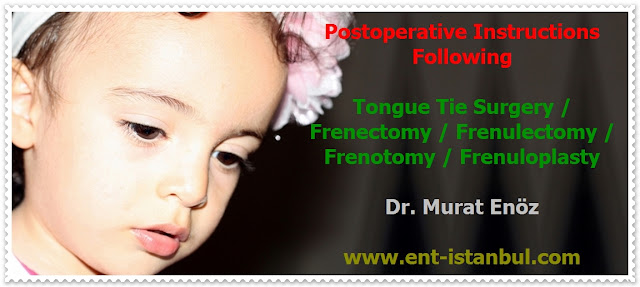 |
| Post-Operative Instructions for Tongue Tie Surgery |
About 10 days after the surgical procedure, pain and discomfort
can be felt. During this time fed a soft warm diet and to use simple
pain medications are helpful. After this time speech therapy is
recommended. in babies less than 6 months, to be fed with mother's
milk is very useful for epithelialization and healing. Recovery rate
in this group of patients is higher and speech therapy is usually
not required after the procedure.
 |
| Tongue tie release surgery (frenulectomy) with thermal welding device for baby |
Effects of Tongue Tie Surgery in Adults
What you will feel after surgery
Generally, the feeling of relief in tongue movements that can be noticed immediately after the procedure, healing tissue under the tongue in the first few weeks, pain and swelling in the tongue can be seen in the first week. You will be informed by Dr. Murat Enöz about language exercises that should be done after tongue tie surgery. Between the 2nd and 6th week after the procedure, you can feel the tension caused by the healing tissue under the tongue, and during this recovery period, it is beneficial to do exercises to stretch the tongue in the midline as much as possible to prevent the re-adhesion percentage of the tongue tie and the healing tissue that may cause movement restriction under the tongue.
When will your tongue completely heal after tongue tie surgery?
Epithelization is usually completed in the 3rd week after the procedure. However, when methods that cause burn damage are used, recovery can be completed in a longer period of time and the amount of pain felt may be greater. During the tongue tie exercises performed after the procedure, it is natural to sometimes feel tearing and pain at the wound site.
Will your speech become clear immediately after the operation?
The tongue tie fixes the tongue on the base of the mouth, causing difficulty in making some sounds and shaping words. However, it can also affect the structure of the language. Especially in adults with short and tight tongue tie who are not treated, short, wide and bifurcated tongue tip, impaired speech clarity and other tongue tie symptoms may be evident. It should not be forgotten that the restricted tongue muscle activity for years immediately after the procedure is not possible to return to normal immediately, and unlike normal people who do not have tongue ties and have a sharp tongue structure, it should be kept in mind that more effort may be required for the contact of the developed tongue tip to the upper hard palate. If you go to a speech and language therapist starting from the 3rd week after the procedure and if the tongue tie exercises are done regularly, the effects of the tongue tie on speech may occur faster.
Other effects of tongue tie surgery in adults
Symptoms such as jaw joint pain, neck pain, reduction in tooth cleaning due to the tongue tie that may occur due to the tongue tie decrease, starting a few weeks after the tongue tie surgery.
Tongue Tie Release Surgery Cost in Istanbul
For babies younger than 6 months, when the operation is performed using clamps and scissors in office conditions, the average operation cost is 600 US dollars. The average processing fee is between 1000 - 1500 US Dollars when the operation is performed with the Thermal Welding device in hospital conditions and sterile operating room conditions for babies older than 6 months and adults. Generally, I prefer only sedation anesthesia in babies and the procedure is terminated without general anesthesia. In adult patients, the procedure can be completed by just injecting a local anesthetic.
Source links:
Murat Enoz, MD, Otorhinolaryngology, Head and Neck Surgeon - ENT Doctor in Istanbul
Private Office:
Address: İncirli Cad. No:41, Kat:4 (Dilek Patisserie Building), Postal code: 34147, Bakırköy - İstanbul
Appointment Phone: +90 212 561 00 52
Appointment Phone: +90 212 561 00 52
Fax: +90 212 542 74 47


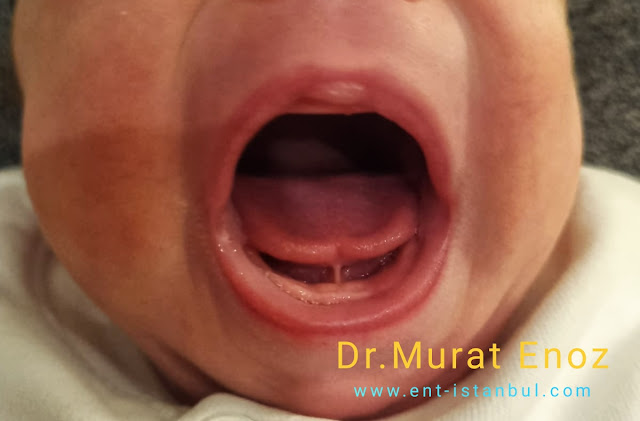

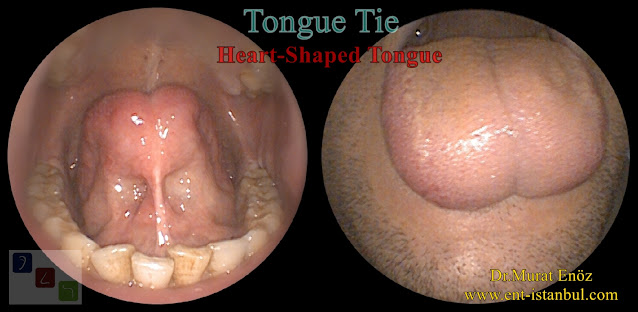






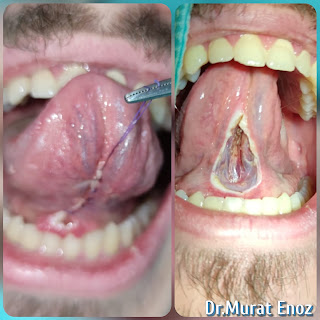
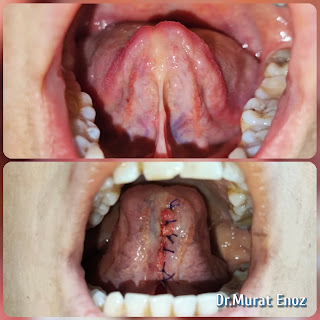
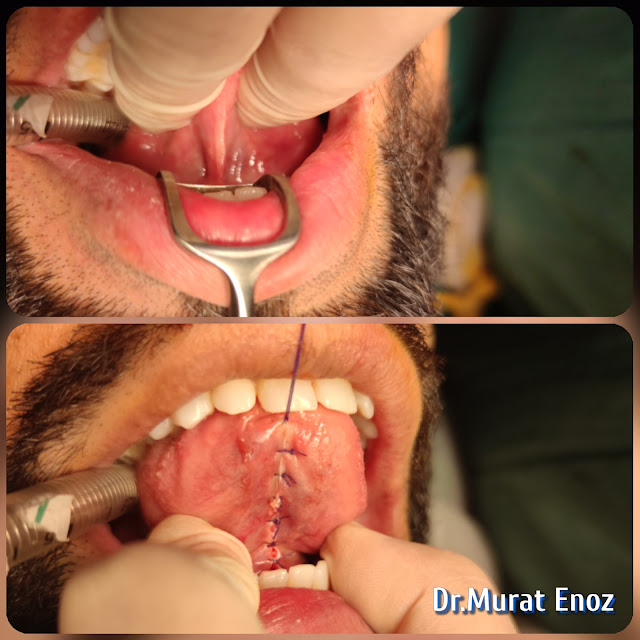
Comments
Post a Comment